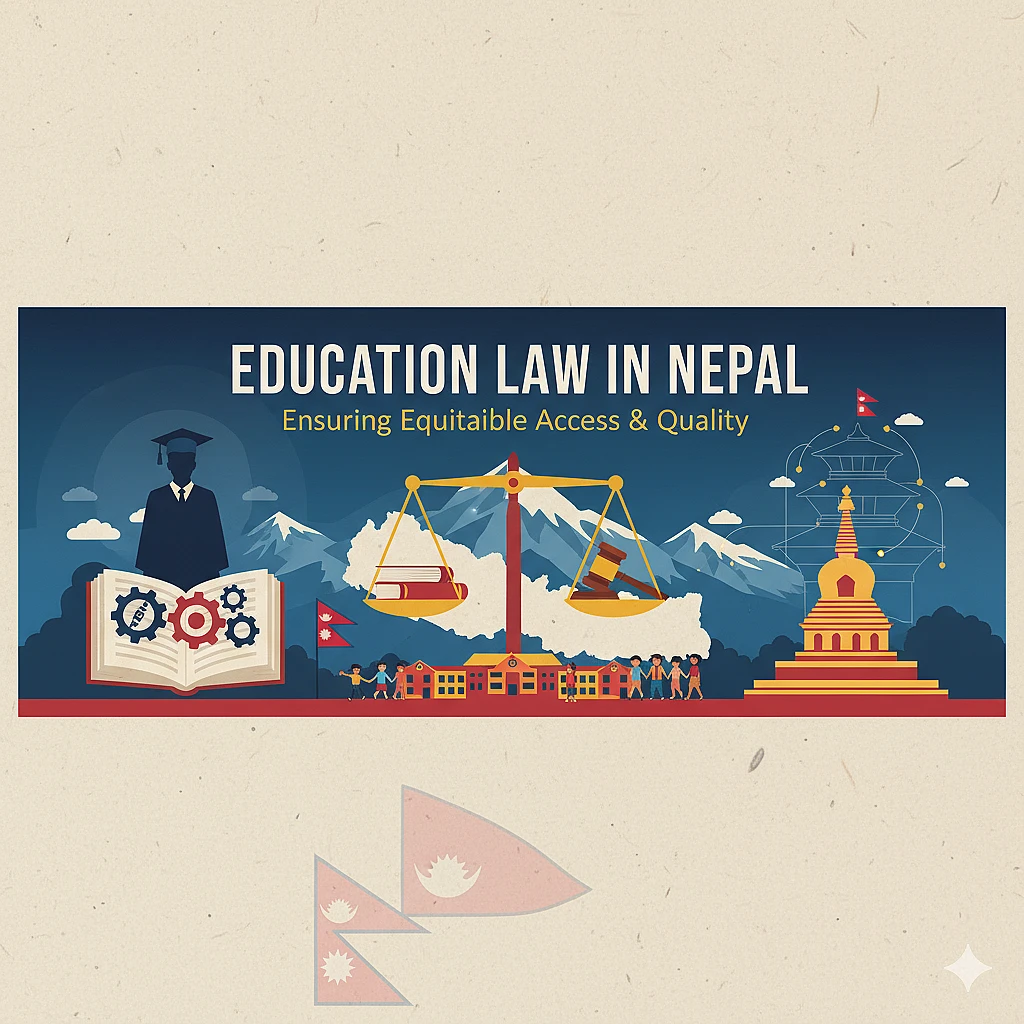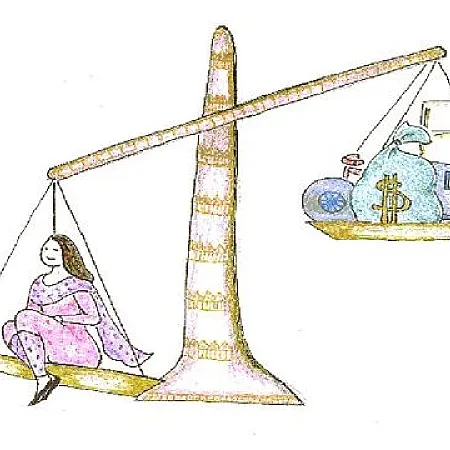Introduction
Education serves as the cornerstone of Nepal's development and social transformation. Since the country's transition to a federal democratic republic, the legal landscape governing education has undergone significant changes. This comprehensive guide to Education Law in Nepal provides essential insights for students, parents, educators, legal professionals, and policymakers seeking to understand the complex legal framework that shapes educational opportunities across the nation. From constitutional guarantees to specific regulations, we'll explore how education law in Nepal operates in practice and what challenges remain in ensuring quality education for all citizens.
Constitutional Foundations of Education Law in Nepal
Education as a Fundamental Right
The Constitution of Nepal (2015) establishes education as a fundamental right, marking a significant milestone in the country's educational legal framework. Article 31 explicitly guarantees every citizen the right to free and compulsory basic education, while also ensuring the right to free secondary education through appropriate legal arrangements. This constitutional provision represents the government's commitment to making education accessible to all Nepalese citizens, regardless of their socioeconomic background.
The constitutional framework further emphasizes the state's responsibility to provide quality education without discrimination, ensuring equal access for marginalized communities, women, and economically disadvantaged groups. This foundation shapes all subsequent education legislation and policies in Nepal, establishing a clear mandate for inclusive and equitable educational opportunities.
State Obligations and Educational Policies
Under Nepal's constitutional framework, the state bears specific obligations regarding education. These include:
- Establishing and operating community schools
- Providing scholarships and educational support to deserving students
- Regulating both public and private educational institutions
- Ensuring quality standards across all educational levels
- Promoting education in mother languages where feasible
These constitutional obligations have been operationalized through various legislative measures and policies, creating a multi-tiered governance structure for education that operates at federal, provincial, and local levels. The federal system established by the constitution has particularly impacted education governance, with responsibilities distributed across different government levels.
Key Legislation Governing Education in Nepal
The Education Act: Core Provisions and Amendments
The Education Act of Nepal serves as the primary legislation governing the country's education system. Originally enacted in 1971 and subsequently amended multiple times, the Education Act provides the legal framework for:
- Establishing and managing educational institutions
- Defining the structure of Nepal's education system
- Setting standards for curriculum and examinations
- Regulating teacher qualifications and employment
- Addressing educational financing and resource allocation
Recent amendments to the Education Act have focused on aligning the legislation with Nepal's new federal structure and constitutional provisions. These changes include provisions for provincial education authorities and expanded roles for local governments in school management and supervision.
Education Regulations and Implementation Guidelines
To operationalize the Education Act, Nepal has developed comprehensive Education Regulations that provide detailed implementation guidelines. These regulations cover:
- School establishment and operation procedures
- Teacher recruitment, promotion, and professional development
- Student enrollment, attendance, and progression requirements
- Examination systems and evaluation methods
- School management committee formation and functions
- Financial management and resource allocation
The Education Regulations are regularly updated to address emerging challenges in Nepal's education system, including issues related to quality assurance, inclusion, and technological integration in teaching and learning processes.
Special Education Laws and Provisions
Beyond the general Education Act, Nepal has enacted specific legislation addressing specialized educational needs. These include:
- The Technical and Vocational Education Act, which governs technical training institutions
- The Higher Education Act, regulating universities and higher education institutions
- Special provisions for children with disabilities and special educational needs
- Legislation addressing education in remote and disadvantaged regions
These specialized legal frameworks complement the general education legislation, creating a comprehensive legal architecture that addresses diverse educational needs across Nepal's varied geographical and social contexts.
Regulatory Bodies and Their Roles
Ministry of Education, Science and Technology
The Ministry of Education, Science and Technology (MoEST) serves as the central authority for education in Nepal at the federal level. The Ministry's key responsibilities include:
- Formulating national education policies and strategies
- Developing and implementing curriculum frameworks
- Coordinating with provincial and local education authorities
- Regulating higher education institutions
- Managing international educational partnerships and agreements
- Overseeing national examination systems
The MoEST operates through various departments and specialized centers, including the Curriculum Development Center, Examination Control Office, and Center for Education and Human Resource Development. These entities work together to implement Nepal's education law and policy framework at the national level.
Provincial and Local Education Authorities
Since Nepal's transition to federalism, education governance has been decentralized, with significant responsibilities transferred to provincial and local governments. Provincial education authorities are responsible for:
- Implementing federal education policies within their jurisdictions
- Managing provincial-level educational institutions
- Coordinating with local governments on education matters
- Developing context-specific educational programs
- Monitoring and evaluating educational outcomes
Local governments, including municipalities and rural municipalities, have assumed direct responsibility for school management, teacher deployment, and educational resource allocation at the community level. This decentralization aims to increase community participation in education and ensure that educational services are more responsive to local needs.
Other Relevant Institutions
Several other institutions play crucial roles in Nepal's education governance framework:
- University Grants Commission (UGC): Regulates and provides grants to higher education institutions
- National Examination Board: Conducts standardized examinations for secondary education
- Non-formal Education Center: Coordinates adult literacy and continuing education programs
- Various specialized councils for technical, medical, and professional education
These bodies operate under the authority of the Education Act and related legislation, each with specific mandates to ensure quality and compliance with national education standards.
Rights and Obligations of Stakeholders
Students' Rights and Responsibilities
Nepal's education law framework establishes clear rights for students, including:
- Right to free and compulsory basic education
- Right to receive quality education without discrimination
- Right to be protected from physical and psychological punishment
- Right to participate in educational decision-making processes
- Right to access educational facilities and resources
Alongside these rights, students also have responsibilities, including regular attendance, respectful behavior toward teachers and peers, and adherence to school rules and regulations. The legal framework emphasizes creating a balanced relationship between rights and responsibilities to foster a positive learning environment.
Teachers' Rights and Professional Obligations
Education law in Nepal outlines specific rights and obligations for teachers, including:
- Right to professional development opportunities
- Right to fair compensation and working conditions
- Right to academic freedom within curriculum guidelines
- Right to participate in school management and decision-making
- Obligation to maintain professional standards and ethics
- Obligation to provide quality instruction to all students
- Obligation to engage in continuous professional development
Recent legal reforms have emphasized professionalizing teaching as a career, with clearer qualification requirements, career progression pathways, and accountability mechanisms. These changes aim to enhance teaching quality and improve educational outcomes across Nepal.
Parents' Rights and Involvement
The education legal framework recognizes parents as important stakeholders in their children's education, granting them:
- Right to choose appropriate educational institutions for their children
- Right to information about school performance and policies
- Right to participate in school management committees
- Right to provide feedback on educational quality and delivery
- Responsibility to ensure children's regular school attendance
- Responsibility to support children's learning at home
Parental involvement is increasingly recognized as crucial for educational success, with legal provisions encouraging active participation in school governance and decision-making processes.
Educational Institutions' Obligations
Schools and other educational institutions in Nepal have specific legal obligations, including:
- Implementing the national curriculum and assessment systems
- Maintaining minimum physical infrastructure standards
- Ensuring child protection and safety measures
- Providing inclusive education for students with diverse needs
- Maintaining transparency in financial management
- Submitting regular reports to regulatory authorities
- Implementing quality assurance mechanisms
These obligations apply to both public and private educational institutions, with compliance monitored through regular inspections and reporting requirements.
Public vs. Private Education Sector Regulations
Public Education System Governance
Public education in Nepal operates through community schools, institutional schools, and higher education institutions established and managed by the government. The legal framework for public education emphasizes:
- Free education at basic levels as guaranteed by the constitution
- Community participation through School Management Committees
- Government funding and resource allocation mechanisms
- Teacher recruitment and deployment through public service processes
- Standardized curriculum and assessment systems
Recent reforms have aimed to improve public education quality through increased autonomy for schools, enhanced accountability measures, and greater community involvement in school management.
Private Educational Institutions Regulation
Private education has grown significantly in Nepal, with the legal framework establishing specific regulations for these institutions:
- Registration and licensing requirements
- Compliance with national curriculum standards
- Tuition fee regulation and approval processes
- Teacher qualification and employment standards
- Infrastructure and facility requirements
- Quality assurance and inspection mechanisms
The Education Act and related regulations balance the need for private sector participation in education with ensuring educational quality and protecting students' rights. Recent legal developments have focused on strengthening regulation of private education to prevent commercialization while maintaining educational standards.
Public-Private Partnerships in Education
Nepal's education law framework also recognizes and regulates public-private partnerships in education, including:
- Partnership schools operated by private entities under government supervision
- Scholarship programs in private schools for disadvantaged students
- Collaborative programs between public and private institutions
- Community-managed schools with private sector support
These partnerships aim to leverage private sector resources and expertise while maintaining public education's accessibility and equity goals. The legal framework provides guidelines for establishing and managing such partnerships to ensure they serve public educational objectives.
Quality Standards and Accessibility in Education
Compulsory Basic Education Requirements
Nepal's constitutional provision for free and compulsory basic education has been operationalized through specific legal requirements:
- Mandatory enrollment for children aged 5-12 in basic education (grades 1-8)
- Prohibition of enrollment fees in basic education
- Provision of free textbooks and learning materials
- School mapping to ensure geographical accessibility
- Special provisions for out-of-school children and dropouts
The legal framework establishes mechanisms for monitoring enrollment and attendance, with penalties for non-compliance by parents or guardians in certain circumstances. These provisions aim to achieve universal basic education and eliminate barriers to school access.
Quality Assurance Mechanisms
Ensuring educational quality is a central focus of Nepal's education law framework, with several quality assurance mechanisms:
- School accreditation and licensing systems
- Regular inspection and supervision by education authorities
- Standardized examinations and assessment procedures
- Teacher performance evaluation systems
- School improvement planning and monitoring
- Community-based monitoring and feedback mechanisms
Recent legal reforms have emphasized outcome-based quality assurance, moving beyond mere compliance with input requirements to focus on learning outcomes and educational effectiveness.
Accessibility and Inclusion Measures
Nepal's education law incorporates specific provisions to enhance accessibility and inclusion:
- Provisions for children with disabilities and special educational needs
- Adaptations for students from linguistic minorities
- Special programs for girls and marginalized communities
- Scholarships and support for economically disadvantaged students
- Flexible learning arrangements for working children
- Infrastructure standards for physical accessibility
These legal provisions aim to address historical disparities in educational access and ensure that Nepal's education system serves all segments of society equitably.
Enforcement Mechanisms and Dispute Resolution
Legal Recourse for Education Rights Violations
Nepal's education law framework provides several mechanisms for addressing violations of educational rights:
- Complaint procedures with education authorities
- Legal action through the court system
- National Human Rights Commission interventions
- Child rights protection mechanisms
- Administrative remedies through education offices
These enforcement mechanisms allow students, parents, and other stakeholders to seek remedies when educational rights are violated, creating accountability within the education system.
Administrative Remedies and Appeals
The legal framework establishes administrative procedures for addressing education-related disputes:
- Appeals to higher education authorities
- Administrative review processes
- Education tribunals for specific types of disputes
- Monitoring by education management committees
- Grievance redressal mechanisms at institutional level
These administrative remedies provide accessible and relatively speedy resolution for many education-related conflicts, reducing the need for formal legal proceedings in many cases.
Alternative Dispute Resolution in Education
Nepal's education law increasingly incorporates alternative dispute resolution mechanisms:
- Mediation processes for school-level conflicts
- Community-based dispute resolution
- Negotiated settlements between educational institutions and stakeholders
- Collaborative problem-solving approaches
These alternative mechanisms aim to resolve conflicts in a manner that preserves relationships and focuses on the best interests of students, while reducing the adversarial nature of formal legal proceedings.
Current Challenges and Reforms in Nepal's Education Legal Framework
Implementation Gaps and Enforcement Issues
Despite comprehensive legal provisions, Nepal faces several challenges in implementing education law effectively:
- Limited awareness of educational rights among stakeholders
- Inconsistent enforcement across different regions
- Resource constraints affecting implementation
- Capacity limitations at provincial and local levels
- Coordination challenges between different government levels
- Monitoring and evaluation gaps
FDI Company Registration in Nepal
These implementation challenges have prompted ongoing reforms to strengthen Nepal's education legal framework and improve its practical effectiveness.
Recent Amendments and Proposed Reforms
Nepal's education law continues to evolve, with recent and proposed reforms including:
- Amendments to align with federal governance structures
- Enhanced provisions for digital education and e-learning
- Strengthened regulations for private education providers
- Expanded provisions for early childhood education
- Revised teacher professional development frameworks
- New mechanisms for educational quality assurance
These reforms aim to address emerging challenges in Nepal's education system and adapt to changing educational needs and contexts.
Future Directions for Education Law in Nepal
Looking forward, Nepal's education law framework is likely to evolve in several directions:
- Greater emphasis on educational outcomes and learning assessments
- Enhanced provisions for technical and vocational education
- Strengthened integration of technology in education
- More robust mechanisms for educational equity and inclusion
- Improved coordination between different levels of government
- Enhanced private sector participation under appropriate regulation
These future developments will shape Nepal's education system and its legal framework for years to come, influencing educational access, quality, and outcomes across the country.
Conclusion
Nepal's education law framework represents a comprehensive system designed to ensure educational rights, establish quality standards, and promote equitable access to learning opportunities. From constitutional guarantees to specific regulations, this legal architecture continues to evolve in response to changing educational needs and governance structures.
Education Consultancy Registration in Nepal
For students, parents, educators, and policymakers, understanding this legal framework is essential for navigating the education system and advocating for improvements. By knowing your rights and responsibilities under Nepal's education law, you can contribute to strengthening the country's education system and ensuring it serves all Nepalese citizens effectively.
If you found this guide to Education Law in Nepal helpful, we encourage you to explore our other resources on legal topics in South Asia. For specific legal advice regarding education-related matters, please consult with qualified legal professionals familiar with Nepal's education legislation and regulatory environment.




